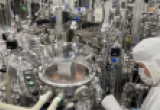The Japanese mission Hayabusa2 aims at studying and returning samples of the C-type asteroid "Ryugu", a first in the exploration of the Solar System. These asteroids are considered to have preserved among the most primordial materials in the solar system, and to possibly be the parent bodies of carbonaceous chondrites, primitive meteorites containing a significant fraction of organic matter (up to a few percent).
You are here
All projects
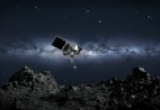
OSIRIS-REx (for Origins, Spectral Interpretation, Resource Identification, Security, Regolith Explorer) is a NASA space mission which aims to bring back to Earth at the end of 2023 samples of the carbonaceous near-Earth asteroid Bennu.
The probe was launched in September 2016 and arrived near Bennu in December 2018. Since then, it has been in orbit mapping the entire surface of the asteroid in order to choose the best place to collect samples. The collection at the Nightingale site was a success in autumn 2020.
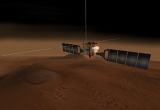
OMEGA is the spectro-imaging instrument of the ESA Mars-Express mission, inserted into Martian orbit the 25th of December 2003. The instrument has observed most of the Martian surface from a polar orbit, over several Martian years. As of 2023, OMEGA still operates on a daily basis, acquiring VIS-NIR (0.35-1.1 µm) reflectance spectra of the surface and atmosphere of Mars, and occasional Phobos during low altitude flybys. Infrared observations (2.5-5.2 µm) of the surface and atmosphere remain possible with OMEGA, they are acquired on-demand for high priority science targets.
| OMEGA has a new dedicated website with up-to-date information including current projects, detailed instrument description, access to both raw and high level data products: https://www.ias.u-psud.fr/omega/ |
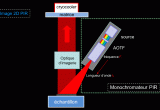
The objective of the Japanese mission Hayabusa-2 was to study and return a sample of a Class C asteroid, "Ryugu". These asteroids are the parent bodies of carbonaceous chondrites, primitive meteorites containing a large fraction of organic matter (up to a few percent). Their study allows us to better understand the planetary formation processes and more generally to have access to the first millions of years of the Solar System, or even before with the possible presence of pre-solar grains. Their composition, rich in organic matter, is also particularly interesting to study in order to better constrain the scenarios of formation and evolution of organic matter in the Solar System.
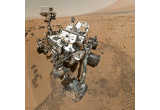
The IAS supplied the RMI micro-camera for the ChemCam instrument to provide the context of the LASER shots of the LIBS instrument.
Contact : John Carter
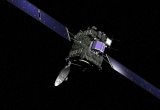
The mission goal was originally set for a rendezvous with comet 46 P/Wirtanen. After postponement of the original launch a new target was set: comet 67 P/Churyumov-Gerasimenko.
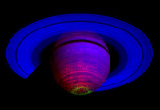
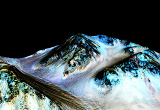

PTAL is a H2020 project (2016-2021) consisting of preparing the analysis of in situ space missions (such as Rovers Perseverance, Curiosity, ExoMars) which have near-infrared, Raman, X-ray diffraction and LIBS spectroscopic instruments. The project consisted in observing several analogous samples of planetary surfaces with space or laboratory instruments in order to make a spectral database. This work was done in collaboration with the University of Oslo and the University of Valladolid. The data is accessible on the site https://ptal.eu/ and the associated publications on https://ptal.eu/publications
Contact : François Poulet

COROT (COnvection and ROtation stellar and planetary TRansits) is a mission mainly led by CNES aiming at seismic observations of stars and the search for exoplanets. It was launched at the end of 2006 from Baikonur on a low polar Earth orbit for an initial duration of 3 years. It has finally been operated until the end of 2013 and scientific exploitation continues.



